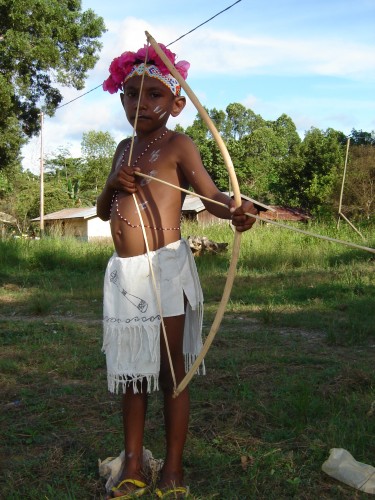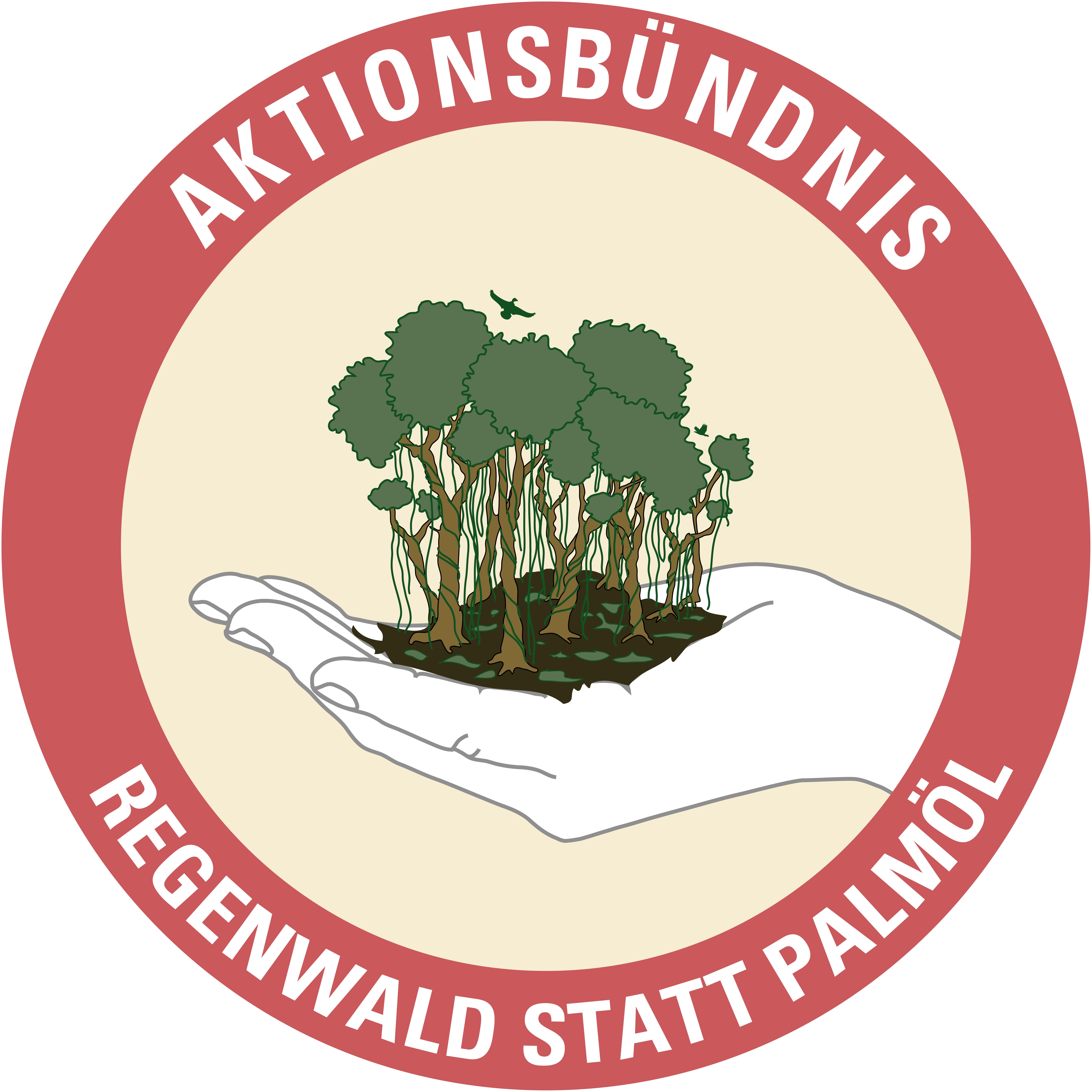
Peace Agreement in Southern Philippines: A Hope for Papua?
Information and Analysis, 06 December 2012
by Basilisa Dengen
The recent peace agreement on Mindanao conflict between the Government of the Philippines and the Moro Islamic Liberation Front (MILF) in Kuala Lumpur has brought a new light of hopes to other remained conflicts in Southeast Asia. As the historic event was spreading in the news on October 9th, a colleague called me and said: „Have you heard? What an achievement they made in the Philippines! I can now see a light for peace in West Papua”. He is currently an active member of a faith based network advocating for better human rights situation in Papua. His extensive experience and involvement in Indonesian political issues have led him to put deep concern on the deteriorating situation in the two provinces of West Papua. His enthusiasm and optimism leads me to question, whether Indonesia would repeat its history in Aceh in 2005? Considering the common knowledge that every conflict is peculiar and therefore there is no so called conflict blueprint, we can still observe some similar conditions on the conflict in the Philippines and Papua, which could bring us some optimism for a path of peace in Papua.
Bumpy road to peace
The MILF is a militant rebel group aiming at creating a separate Islamic state in the southern Philippines. It emerged in 1977 as splinter of the Moro National Liberation Front (MNLF) its predecessor, which emerged in the early 1970s. The movement is based in central Mindanao and has strong basis in rural areas. The people of Bangsamoro identify themselves different from the rest of the Philippines, because of their history and belief. Economic grievances such as lack of development progress in the area have also deepened the conflict ever since. According to Henri Dunant Centre „the conflict in Mindanao has by some estimates cost the lives of at least 120,000 people since the 1970s and displaced two million people”. The Philippines’ governments responded to the conflict differently. The Estrada administration had opted for a military approach, meanwhile Arroyo started to open peace talks since she came into power in 2001. The breakthrough was achieved in 2003 as the MILF leader, late Salamat Hashim, agreed on a peace deal with Arroyo that was followed by a ceasefire. This agreement, however, had been always coupled with hostilities and clashes between both parties, which cost lives on both sides. Moreover, the peace process had not been easy, since MILF was alleged as part of the foreign terrorist network Jemaah Islamiah.
It has been more than four decades that Philippines’ governments have to deal with several secessionist challenges in the southern part of its territory. There are at least four secessionist groups in the region: MNLF, MILF, Abu Sayyaf, and New People’s Army (Communist). International organizations and governments have worked intensively to support peace negotiations in the Philippines. The recent peace process between the Philippines’ government and MILF was mediated by Henri Dunant Centre, which has an extensive record on international conflict mediation — including mediation of the Aceh conflict in 2003. In implementing its role Henri Dunant Centre gained full support from the International Crisis Group (ICG) and the Malaysia-led International Monitoring Team (IMT) comprising Malaysia, Brunei, Japan, Norway, the European Union (EU), and Indonesia. The agreement allows the people of Bangsamoro to form their own ministerial government in Mindanao and to write and develop their own basic law. Furthermore, the MILF forces will be decommissioned and there will be a gradual transfer of law enforcement from the Armed Forces of the Philippines to the local police.
A chance for Papua?
The involvement of Indonesia in the peace process in Southeast Asia has increased in the recent years. We could see how last year as ASEAN Chair Indonesia initiated the monitoring team on the border conflict in Cambodia. This could be appreciated as a sign of Indonesia’s commitment to maintain regional peace and stability. The question is whether this automatically reflects its commitment on resolving its own domestic conflicts, particularly the longstanding conflict in Papua. Looking back at the history, the conflict in Papua has started since the New York Agreement brokered by the UN in 1962. Several years later in 1969 it resulted in the controversial transfer of sovereignty through the so-called Act of Free Choice. Under Suharto’s regime the people in West Papua suffered loss and damage from many counterinsurgency operations. Recently this year, two human rights organizations, native ELSHAM and ICTJ (International Center for Transitional Justice), reported that there were about 750 human rights violations committed during the period of 1963-1998. There is no clear estimation on the number of victims so far, probably due to the long duration of this conflict.
After the fall of the New Order regime in 1998 there have been some attempts to grant peace to the people in the region. The enactment of a Special Autonomy Law in 2001 was essentially the breakthrough. Unfortunately, the implementation has drawn many criticisms for its incompliances and inconsistencies citing local activists. Last year, the government established an acceleration unit (UP4B, Unit Percepatan Pembangunan di Papua dan Papua Barat) to coordinate the government’s development policy in the two provinces of Papua. It has later suffered rejection from local people and it is criticized as ineffective by the national parliament. Several initiatives from civil society such as the Peace Network (JDP; Jaringan Damai Papua) have also emerged to facilitate and promote dialogues. Yet, the challenge remains immense since lately the number of violent clashes is increasing.
Many observers agree that the Indonesian government is lacking a political will to resolve the problems in Papua. Meanwhile, the key to a peace agreement is the willingness of both parties to present at the negotiation table. The political will of the Indonesian government is always hampered by a nationalist ideology that does not accommodate any secessionist attempts. The territorial integrity of the nation is immutable and an absolute taboo to any discussion. On the other hand, it’s also not easy to identify a suitable representative at the Papuan side. Different from MILF or GAM (Gerakan Aceh Merdeka; Aceh Freedom Movement) in Aceh, there are various groups and interests in Papua to deal with. OPM (Organisasi Papua Merdeka; Papua Freedom Organization) or KNPB (Komite Nasional Papua Barat; West Papua National Committee) alone are not strong and representative enough. This makes attempts to negotiation more complicated and therefore becomes an advantage for the government to justify its position.
Of further concern is, that the government tends to see the situation in Papua purely as a consequence of economic grievances despite the more comprehensive findings and recommendations articulated in the Papua Road Map in 2008. In fact, economic grievances are only one implication of the longstanding resentments towards Jakarta’s policy in the region. This approach is worsened by other incorrect policy strategies like massive development projects and private investments. Extensive oil palm plantations have brought various social problems and environmental degradation, a further marginalization of native Papuans, deepened resentments, and subsequently an escalation of the conflict.
One determining point is that the Papua conflict lacks strong international support. This reminds me to the term forgotten conflict, conflicts which despite of their massive impact gain no or very little international attention. From history we learned that the integration of Papua into Indonesia was actually arranged through international support when the UN General Assembly finally accepted the 1969 Act of Free Choice’s voting result. Since then, no significant discussion on the contemporary situation of Papua took place at the international level. There might have been low profile, small, and sporadic activities by international organizations in the field. However, they are very limited to ‘peaceful’ developmental assistance. Influential countries regarding this situation such as the US, Japan, Australia or the EU surprisingly play safe, restricting their intervention to soft development aid and exercising rather diplomatic rhetoric. Many analyze that those countries have their economic interest at stake when they start pushing peace talks on Papua. However, this was partly negated by the Aceh peace. Economic interest is a significant, however not always a determining motive.
Here I would like to underline that the key factor to the success of the peace talks held in Kuala Lumpur was the openness of the Philippines’ government for international support and assistance. Series of talks between both parties always have been backed by a strong international involvement. The Philippines’ government has shown its commitment to peace by giving people’s voice a chance. It proved that nationalistic and militaristic approaches are way too old fashioned nowadays. Though, national stability can be achieved through an approach based on human security. The first important step has been taken, however, reciting David Gorman from Henri Dunant Centre „Peace does not only come with an agreement. The real test will come as the parties seek to implement the agreement effectively, comprehensively and inclusively among all the Bangsamoro”. Reflecting this progress to Jakarta politics towards Papua, there are still many steps to go. A recent counterproductive step taken was the government’s response to the Universal Periodic Review (UPR) before the United Nations Human Rights Council (UNHRC). Once again the Indonesian government reiterated its rejection to allow foreign journalists to enter Papua, or to invite the UN Special Rapporteur for Indigenous People to visit the country. This makes Indonesian government’s commitment to peace process way behind what the Philippines has just achieved.
Back to the question: is there any chance for peace in Papua? Yes, there is! But only if the Indonesian government has the willingness to leave its old fashioned nationalistic perspective on understanding the conflict, if it opens its ears to the people’s voice, and if it opens its hands for international support.
The author is a former DAAD scholarships holder 2009-2011 for Master Course Peace and Conflict Studies at the Otto-von-Guericke University Magdeburg, Germany, currently working for Watch Indonesia! in Berlin. Reachable by email at basilisa@watchindonesia.org








